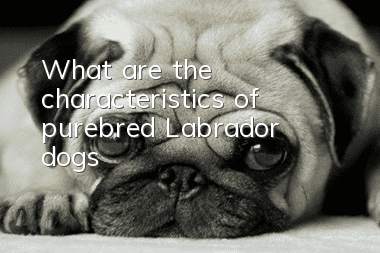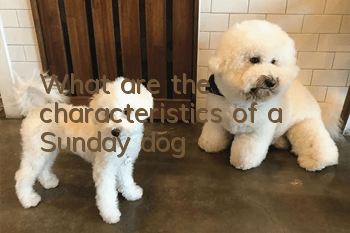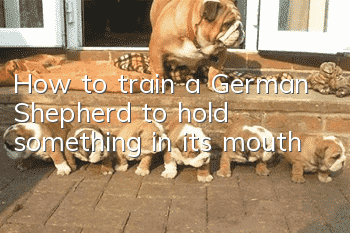What are the characteristics of purebred Labrador dogs?

Chocolate color: mixed with light chocolate color to dark chocolate color. A small patch of white hair on the chest is allowed. There are relatively few colors, so the price is the most expensive!
Yellow: The yellow coat can range from reddish brown to light cream and is mixed in the ears and undercoat or the undercoat of the tail.
Black: The whole body is black. A small patch of white hair on the chest is allowed.
2. Labrador’s coat
The coat of the Labrador Retriever is short, straight and very dense, giving the finger a rather hard feeling when touched. Labrador Retrievers have soft, weather-resistant undercoats. A slightly wavy coat on the back is allowed.
3. Labrador’s body
The joint of the Labrador Retriever is short, and the chest should not be too narrow, so that the forequarters appear empty; nor should the chest be too wide, so as to appear like a bulldog's forequarters. Correct chest conformation is one that tapers slightly between the front legs, allowing free movement of the forelimbs. The curve of the underbelly in an adult dog is almost straight or slightly lifted. The loin is short, broad, strong, full and powerful, extending into the very well developed and powerful hindquarters. Viewed from the side, the Labrador Retriever's forechest is well developed, but not exaggerated.
4. Labrador’s head
The top of the head is very broad, making the head look quite big. The forehead should be obvious, the head should be clear-cut, and the lower jaw should be long and powerful, but it should not feel too long. The nose should be wide and the nostrils should also appear wider. The teeth are strong and regular, with a horizontal or scissors bite.
The ears hang moderately on both sides of the head, and are slightly set back. They are low-hanging but not heavy. The eyes are medium in size, and they look considerate, giving people a very smart and gentle feeling.
5. Labrador’s front legs
Viewed from the front, the front legs are straight and have strong bones. Too much or too little bone is undesirable. Viewed from the side, the elbows are just below the withers and the forelegs are perpendicular to the ground and well positioned under the body.
The elbows are close to the ribs with no sign of slack. The pasterns are strong and short, slightly sloping relative to the vertical legs.
6. Labrador’s paws
Strong and compact, with well-arched toes and well-developed pads. Dewclaws can be removed. Splayed feet, rabbit feet, protruding joints, or feet that turn in or out are serious faults.
7. Labrador’s hindquarters
The Labrador Retriever's hindquarters are broad, muscular, well defined from croup to hocks, with well-rotated stifles and short, strong hocks. Viewed from behind, the hind legs are straight and parallel to each other. Viewed from the side, the hindquarters are angled in harmony with the forequarters.
The bones and muscles of the hind legs are strong, and the knee joint angle is moderate. The knee joint is strong and does not slip when you exercise or stand. Hocks strong, set low, will not slip or overstretch during exercise or while standing. The angle of the knee joint and hock joint reaches the optimal position, which can provide a good balance between propulsion and traction. When standing, the toes of the hind limbs are slightly farther back than the hips.
8. Labrador’s tail
The tail is a unique characteristic of the breed. Very thick at the base, tapering towards the tip. Medium length, not extending beyond hocks. The tail is unfeathered and covered all around with the thick, Labrador Retriever's short, dense coat, resulting in a peculiar rounded appearance that has been described as an "otter" tail.
The tail is an extension of the topline, both at rest and in motion. May be held cheerfully but not curled behind the back. The tail is well coordinated with the overall body, forming a flowing curve from the top of the head to the tip of the tail.
- What are the personality traits of Border Collies?
- What to do when a female dog menstruates
- What precautions should be taken when feeding puppies?
- What kind of hair is good for Beagle dogs to eat?
- What should Whippets eat to keep their hair beautiful?
- How to correct dog food protection
- How to style a Shih Tzu dog
- What is the personality of a bulldog?
- What are the personality traits of the Belgian Shepherd Dog?
- How to train a dog to fetch



